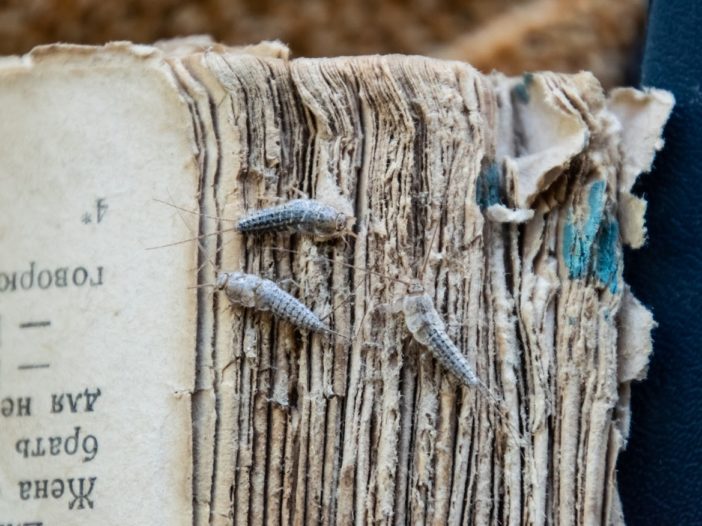
If a silverfish sounds to you like a shimmering tropical fish you might spot when snorkeling, think again. The name sounds glamorous but these pests are nothing you want to see.
While not fish, silverfish have many fish-like characteristics. Their bodies taper from head to tail and they are covered in scales that give them a shimmering or silver appearance. Silverfish do not live in water, but they do prefer moist, humid, and warm conditions which is why you might spot them in your bathroom. The dead giveaway this is a pest and not a fish are the six legs that propel the speedy insect across your floors and walls.
They are not dangerous to people, aside from the panic you might feel as one drops from the ceiling or appears in your box of cereal. But with an appetite for paper, dry goods, clothes, and even the glue found in book bindings and wallpaper, they can do a lot of damage around your home. Silverfish are also hardy, able to survive for weeks without food or water, and they are stealthy preferring to only come out from their hiding places at night. These traits make them a challenging foe.
Some facts, though, are on your side. Silverfish need humidity and prefer air temperatures at least in the 70-degree range. They also stick close to their food source once they find one making them an easier target to find.
Silverfish will stick to the great outdoors and are often brought indoors with infested objects like cardboard boxes. They might also creep in through cracks and crevices around doors, windows, and pipes. The best prevention is to not keep anything stored directly next to the exterior of your home, like damp wood, and seal up any leaky spots.
Inside, avoid keeping stacks of magazines, newspapers, and books in warm humid places like attics or basements. Store bulk food items like oats and flour in sealed containers, and regularly vacuum carpets and upholstery.
There is also some evidence that silverfish do not like the smell of citrus, cinnamon, or lavender so cleaning with products that contain these oils may also deter them from sticking around. And on the other side of their tastes, they love salt but eating it will dehydrate them and likely cause them to die. You can tell you have a silverfish problem of course if you see them, but other signs include yellow stains and small holes in clothing or paper that are accompanied by droppings. And while there may be some home remedies to try, they are best in preventing the silverfish from moving in. If you find you have a full infestation call in the experts at Northwest Pest because those little pests can be as slippery to remove as, well, a fish.